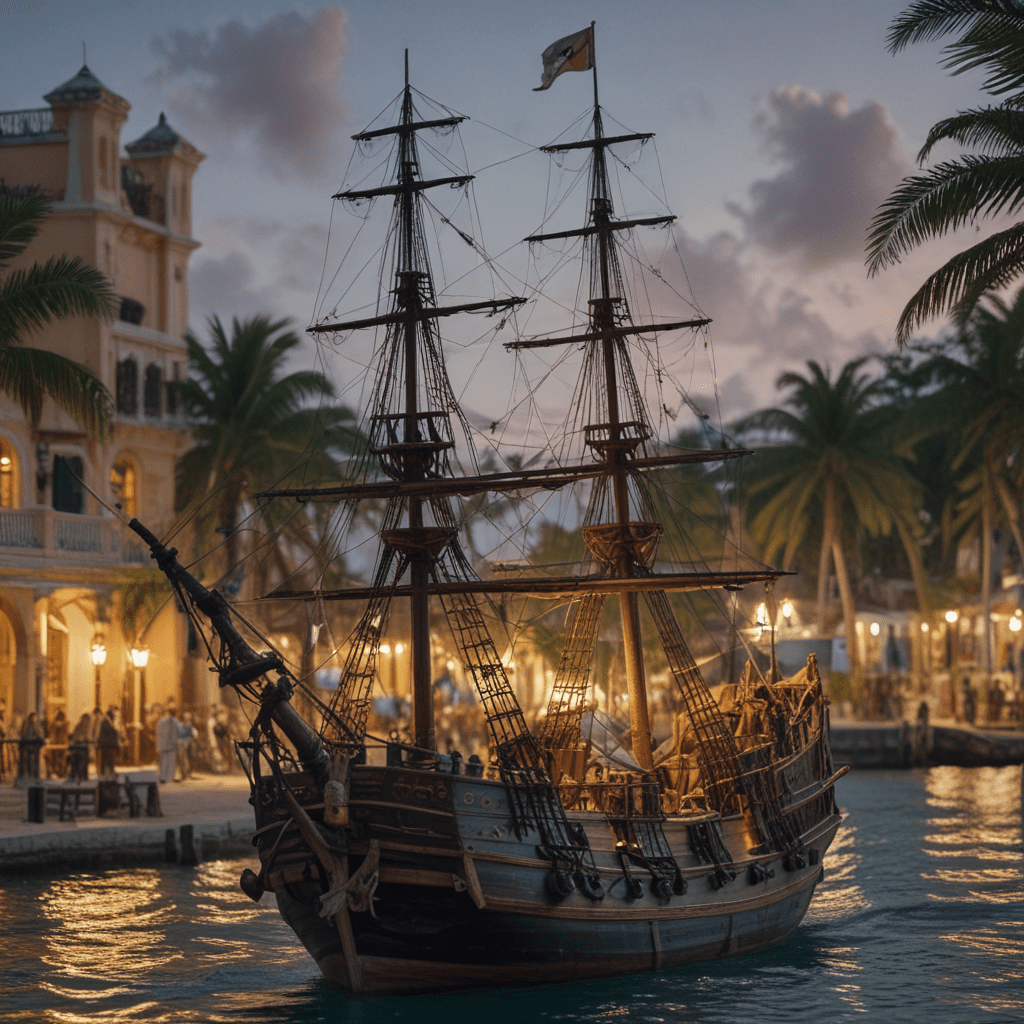
The Rich History of Pirates in the Bahamas
1. The Early Days of Piracy in the Bahamas
The Bahamas, an archipelago located in the Caribbean Sea, has a rich and captivating history intertwined with the world of piracy. The Bahamas provided shelter and refuge to pirates during the 17th and 18th centuries, making it a notorious haven for these outlaws of the sea. The islands' strategic location, with numerous secluded coves and harbors, made it the perfect hideaway for ships evading authorities and seeking respite from the dangers of the open ocean.
As European settlements expanded throughout the Caribbean, piracy in the Bahamas flourished. The islands' isolation and proximity to major shipping lanes made it an ideal base for pirates to raid Spanish galleons carrying treasure from the New World. Pirates took advantage of the lack of law enforcement and established a network of secret hideouts and safe havens within the Bahamas.
2. The Golden Age of Piracy
The Golden Age of Piracy, spanning from the late 17th century to the early 18th century, marked a period of unprecedented activity and notoriety for pirates in the Bahamas. This era witnessed the rise of legendary pirate captains such as Blackbeard, Captain Kidd, and Calico Jack, who roamed the waters of the Caribbean Sea, terrorizing merchant ships and amassing vast fortunes. The Bahamas provided a sanctuary for these notorious figures, allowing them to evade capture and replenish their supplies.
Nassau, the capital of the Bahamas, emerged as a vibrant hub for pirates during this time. It became known as the "Pirate Republic," where swashbucklers could revel in their wealth and indulge in a life of revelry and debauchery. The city's taverns and brothels were frequented by notorious pirates seeking respite between their adventures on the high seas.
3. Nassau: The Pirate Republic
Nassau's reputation as a pirate stronghold drew the attention of authorities, particularly the British Royal Navy. In 1718, Captain Woodes Rogers arrived in Nassau as the newly appointed governor of the Bahamas with the mission of suppressing piracy. Rogers implemented stringent measures to curb pirate activities, including the establishment of a Vice-Admiralty Court to prosecute captured pirates. Despite these efforts, Nassau remained a popular haunt for pirates, who continued to operate in the shadows, taking advantage of the island's remote location and the sympathy of locals.
4. Famous Pirates of the Bahamas
Edward Teach, better known as Blackbeard, stands as one of the most infamous pirates to sail the waters of the Bahamas. His fearsome appearance, complete with a long, flowing beard and a lit fuse tucked under his hat, made him a recognizable figure throughout the Caribbean. Blackbeard's reign of terror spanned from 1716 to 1718, during which time he captured numerous ships and amassed a vast fortune.
Anne Bonny and Mary Read, two female pirates who defied gender conventions, also made their mark in the Bahamas. They joined Calico Jack's crew, participating in raids and engaging in combat alongside their male counterparts. Their daring and fearless nature earned them a reputation as formidable pirates, challenging societal norms and etching their names in the annals of pirate lore.
6. The Decline of Piracy
As the 18th century progressed, efforts to suppress piracy intensified. The British Royal Navy increased its patrols in the Caribbean Sea, rounding up and executing captured pirates. Additionally, the establishment of legitimate trade routes and improved security measures made it more difficult for pirates to operate successfully. By the mid-18th century, the Golden Age of Piracy had come to an end, and the Bahamas gradually transitioned into a peaceful and stable British colony.
7. The Legacy of Piracy in the Bahamas
The legacy of piracy in the Bahamas continues to resonate in the islands' culture, tourism industry, and historical sites. Numerous pirate-themed attractions and tours offer visitors a glimpse into this captivating era. Pirates of Nassau Museum, located in the heart of Nassau, showcases exhibits that delve into the history, lives, and exploits of famous pirates who roamed the Bahamas.
8. Modern-Day Piracy in the Bahamas
While the Golden Age of Piracy has long passed, modern-day piracy persists in different forms. Drug trafficking and smuggling have emerged as significant issues in the Bahamas, particularly in remote and sparsely populated areas of the archipelago. Authorities continue to combat these illegal activities, ensuring the safety and security of the islands and their inhabitants.
9. Museums and Historical Sites
To preserve and celebrate the history of piracy in the Bahamas, several museums and historical sites offer visitors an immersive experience. Fort Fincastle, overlooking Nassau harbor, dates back to the 18th century and played a crucial role in defending the city against potential pirate attacks. The Queen's Staircase, carved into solid limestone by enslaved people, served as an escape route for residents seeking refuge from pirates during raids.
10. The Bahamas as a Pirate Tourism Destination
The allure of piracy remains a potent force in the Bahamas' tourism industry. Visitors from around the world are drawn to the islands to explore pirate-themed attractions and immerse themselves in the captivating history of swashbucklers, buried treasures, and naval battles that shaped the Bahamas' past. This rich heritage continues to fascinate and captivate, making the Bahamas a unique and intriguing destination for history enthusiasts and adventure-seekers alike.
FAQs:
Q: When was the Golden Age of Piracy in the Bahamas?
A: The Golden Age of Piracy in the Bahamas spanned from the late 17th century to the early 18th century.
Q: Who was the most infamous pirate associated with the Bahamas?
A: Edward Teach, better known as Blackbeard, is considered the most infamous pirate to have sailed in the waters of the Bahamas.
Q: What is the name of the museum in Nassau that focuses on the history of pirates?
A: Pirates of Nassau Museum in the heart of Nassau showcases exhibits that delve into the history, lives, and exploits of famous pirates who roamed the Bahamas.
Q: Are there still pirates in the Bahamas today?
A: Modern-day piracy persists in different forms in the Bahamas, primarily involving drug trafficking and smuggling. However, authorities continue to combat these illegal activities to ensure the safety and security of the islands.
Q: Can you visit historical sites related to piracy in the Bahamas?
A: Yes, there are several historical sites related to piracy in the Bahamas, such as Fort Fincastle, the Queen's Staircase, and the Pirates of Nassau Museum, which offer visitors an immersive experience into this captivating era.

